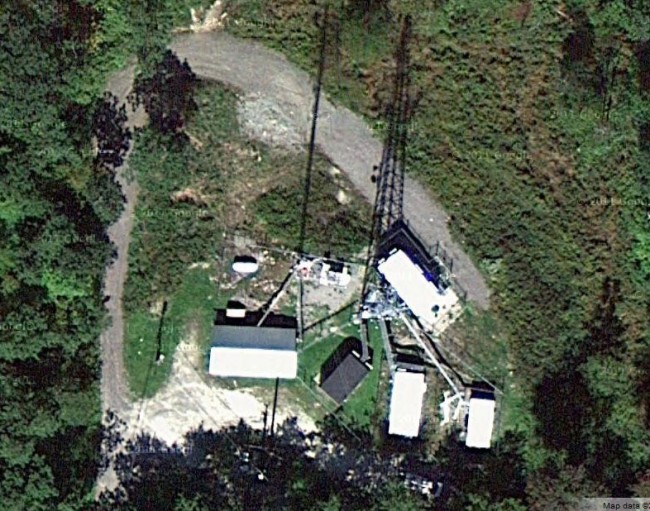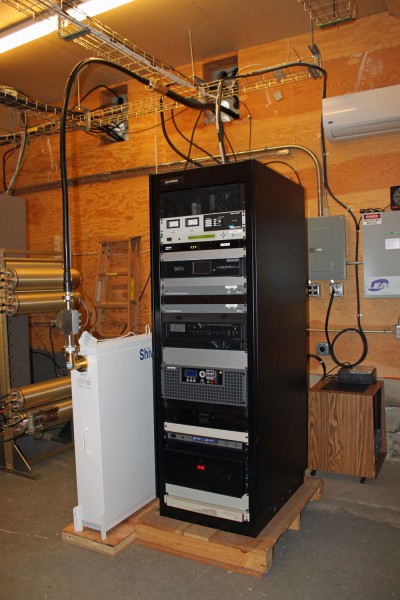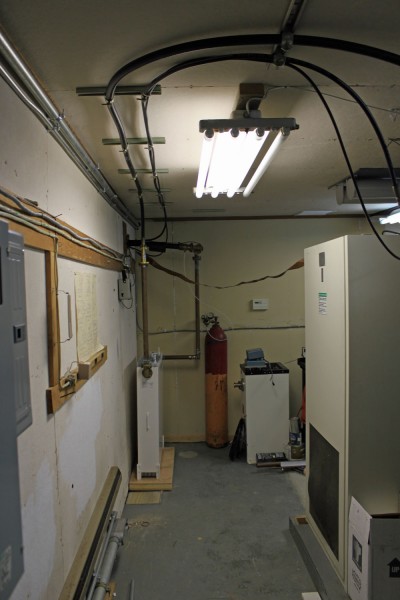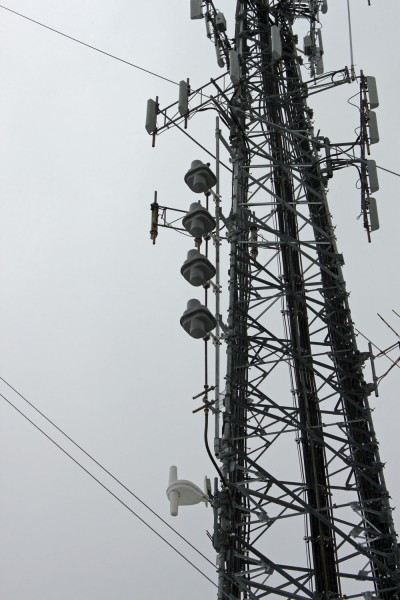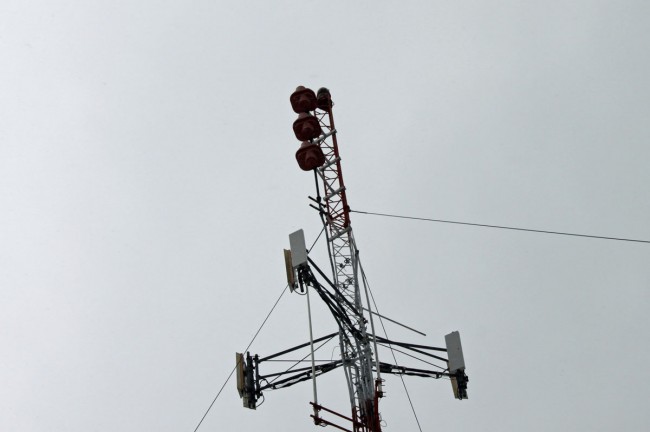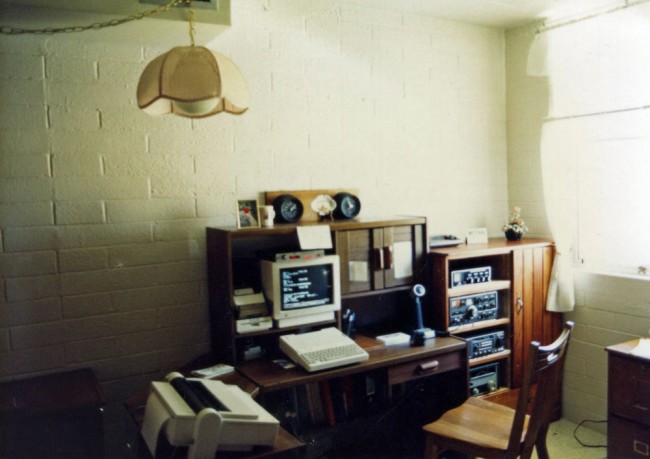High winds seem to be the culprit in the collapse of two towers in North Adams. According to the Motorola system technicians, it happened at about 12:30 am Sunday morning, which is when all their link loss alarms started going off. The larger, self-supporting tower broke from its mounting plate and tipped over into the smaller guyed tower next to it. Effected are WUPE-FM and W226AW (WFCR New England Public Radio) as well as NEPR’s new station WNNI which has not officially signed on.
Cellular service for ATT, Verizon, and Sprint/NEXTEL were all knocked offline as well as internet services and E911 dispatch. Those services are coming back online, with temporary modular cell units en route. N
Here are some pictures:
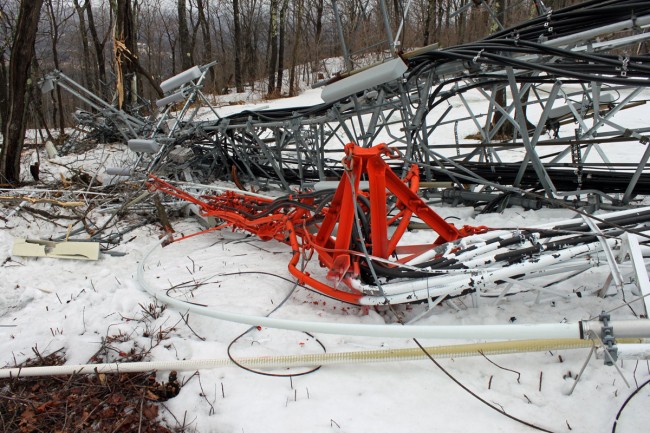
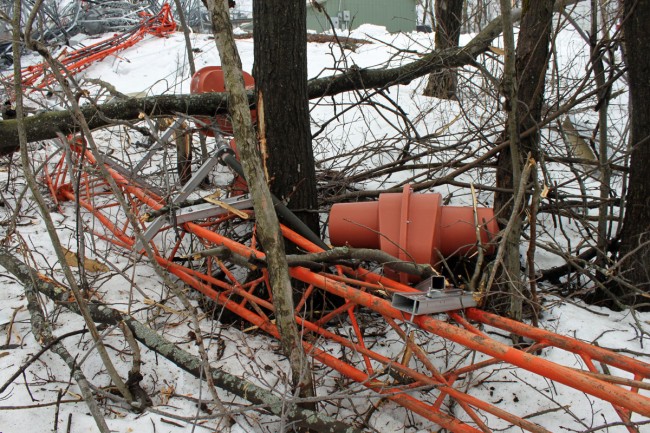
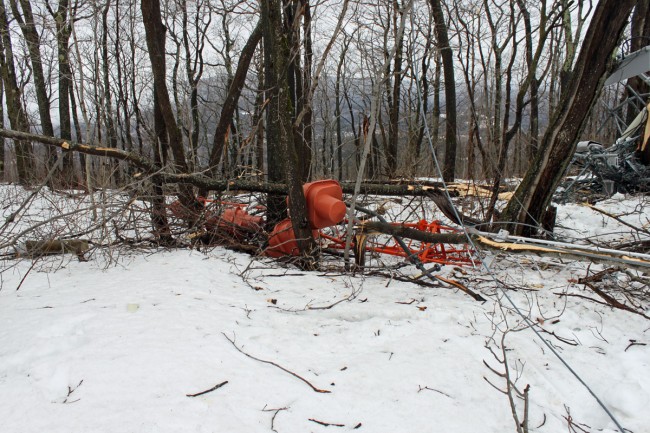
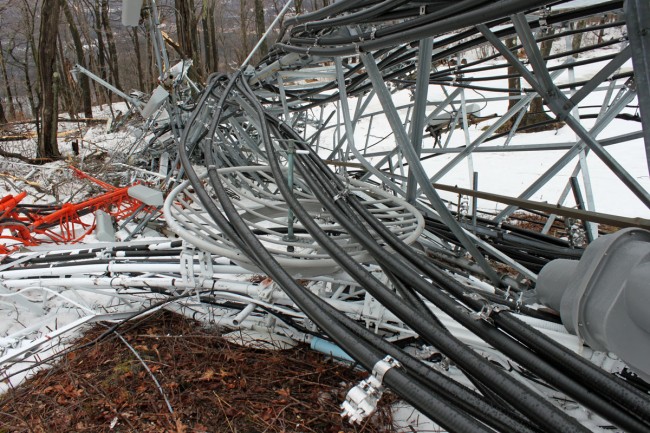
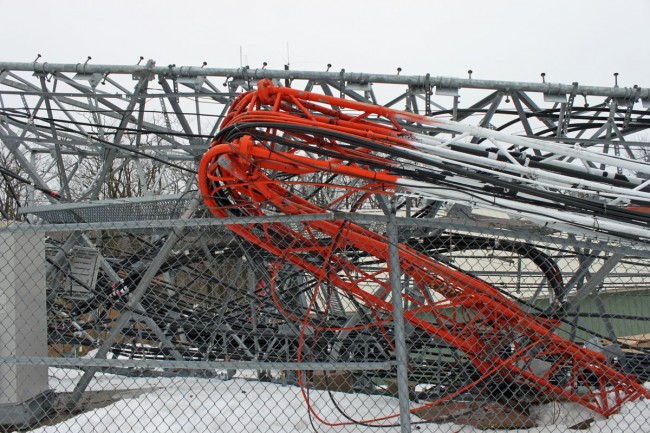
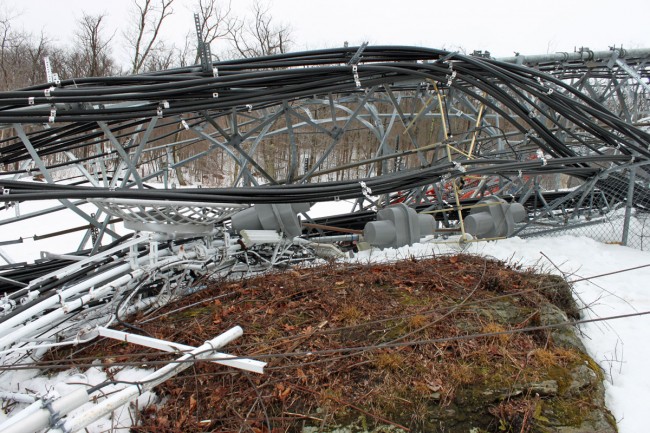
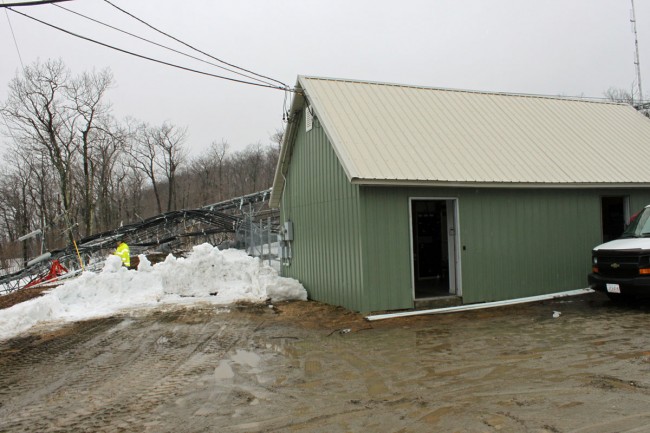
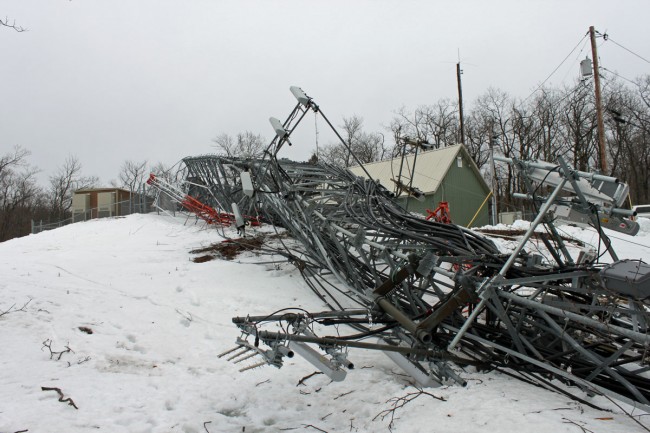
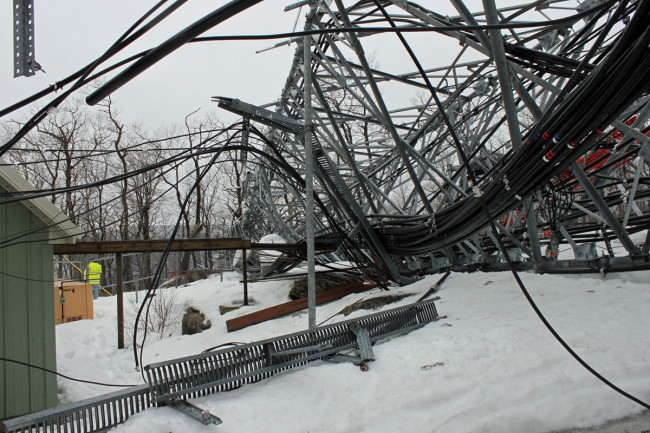
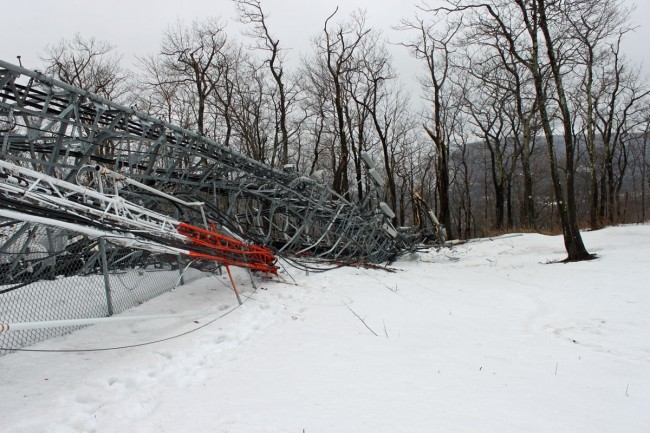
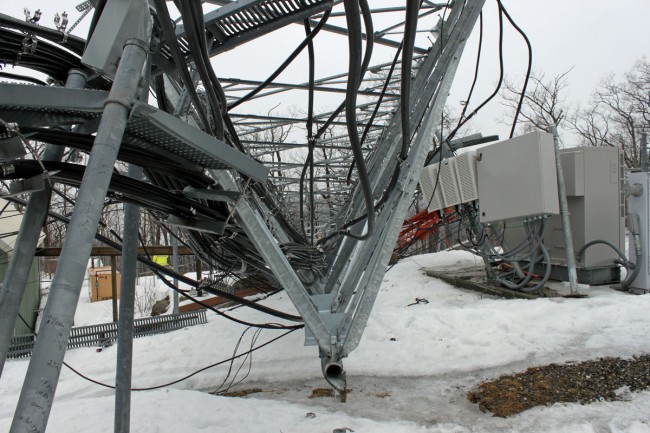
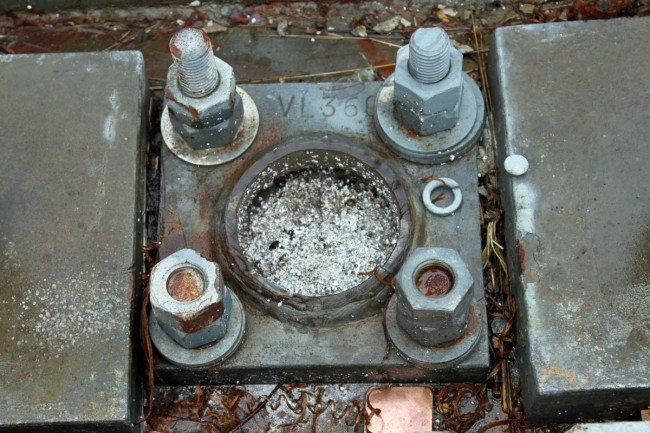
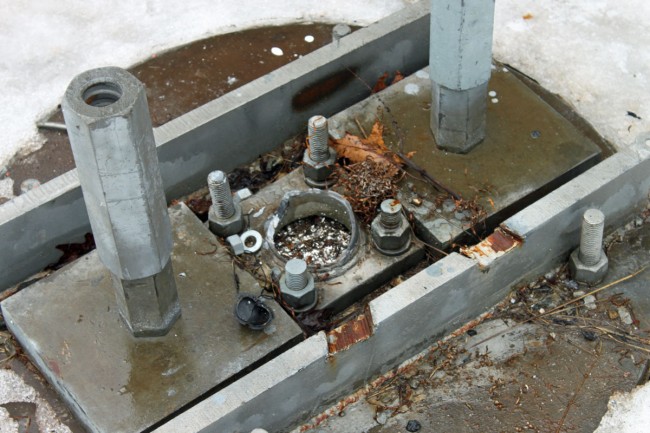
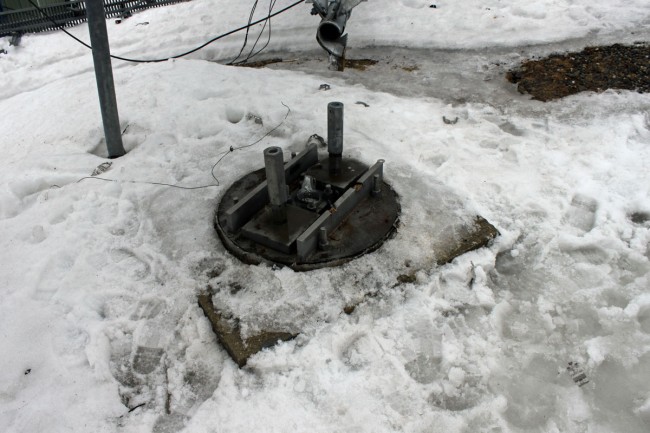
For pictures of the towers during happier times, refer to this post: Filtering for co-located FM transmitters.
Restoration work is underway with WUPE-FM expected to return to the air at low power by Monday afternoon.
Update:
WUPE-FM was returned to air at low power by about 1pm on Monday 3/31. We took an unused Shively 6812 antenna that was tuned to 94.1 MHz and retuned it to 100.1 by cutting 1/4 inch pieces from the end of the elements until it was on frequency. It took a bit of doing, but with a network analyzer, we were able to get it to 1.2:1 SWR with symmetrical sidebands. Running 600 watts, it covers the city of license and then some.
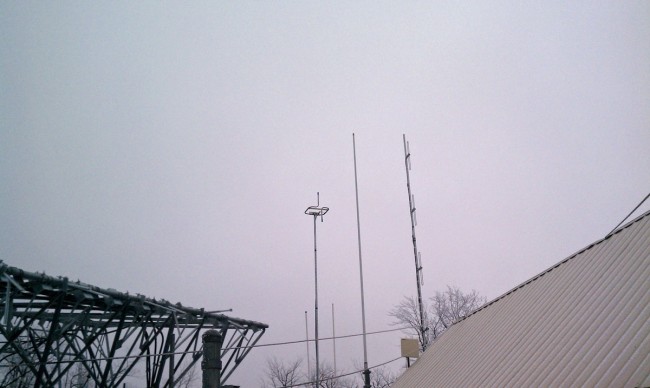
The STL antenna is a survey antenna mounted on the side of the building. In this configuration, with the leaves off of the trees, we are getting about 250 uV signal, which is pretty good.
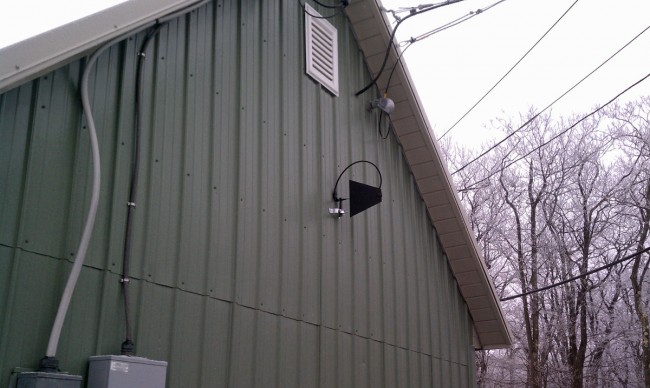
The site is now crawling with insurance investigators, cell site technicians, North Adams fire department, Berkshire County Sheriff’s officers, tower workers, etc. After we finished this work, we cleared out to make more room for everybody else. Estimated restore time for W266AW is Wednesday 4/2.
Planning for the replacement tower is already in progress, I’d expect it to happen fairly quickly. The next step for the broadcasters is to put up a 70-foot utility pole and get a full-powered antenna for WUPE. This should happen in the next two weeks or so. That will serve as the temporary facility until the new tower is constructed.

